| Summary: This article emphasizes the vital role of safety cases in the hazardous oil and gas industry. It defines safety cases as evidence-based documents crucial for risk identification and control. Hazard categories, real incidents, regulations, and benefits are succinctly covered, highlighting safety cases’ importance. Regulatory standards, benefits, and the role of safety cases in mitigating hazards are effectively covered. |
Safety is a paramount concern within the oil and gas industry. With complex operations, high-risk activities, and the potential for catastrophic incidents, it is crucial to prioritise and ensure the well-being of workers, the environment, and surrounding communities. In this industry, safety cases play a vital role in mitigating risks and providing a framework for navigating hazards effectively. This article explains what is a safety case and safety case examples.
Importance of Safety in the Oil & Gas Industry
Safety is not just a priority but an absolute necessity in the oil and gas industry. Workers in this sector face various hazards daily, including but not limited to:
- Exploration and production risks: From drilling and excavating operations to offshore platforms and pipelines, the oil and gas industry involves intricate processes that can expose workers to numerous dangers. These risks include equipment failures, fires, explosions, and natural disasters like hurricanes and earthquakes.
- Transportation hazards: Transporting oil and gas products via pipelines, ships, tankers, or trucks comes with risks. Accidents, leaks, spills, and explosions can occur during transportation, posing severe threats to human life and the environment.
- Chemical exposures: Chemicals and substances used in the exploration, extraction, processing, and refining of oil and gas can be hazardous if not handled properly. Workers may encounter toxic gases, flammable substances, corrosive chemicals, and other harmful materials that can have long-term health effects.
Given the gravity of these hazards, companies within the oil and gas industry must establish robust safety measures and systems to protect their workforce and minimise the occurrence of incidents.
Overview of Hazards Faced in the Industry
Navigating oil and gas industry hazards requires a thorough understanding of the risks involved. Some of the key hazards include:
- Fires and explosions: The presence of flammable materials and ignition sources can lead to catastrophic fires and explosions. These incidents often result from inadequate maintenance, poor equipment integrity, or human errors.
- Gas leaks: Gas leaks, such as methane, pose a substantial risk due to their flammability and potential for asphyxiation. These leaks can occur during drilling, transportation, or storage processes, leading to significant safety and environmental concerns.
- Worksite accidents: Oil and gas operations involve heavy machinery, high-pressure systems, and rigorous physical labour, making worksite accidents a significant hazard. Falls, equipment malfunctions, and accidents related to transportation and lifting operations are common in this industry.
- Hazardous substances and chemicals: The handling, transportation, and storage of hazardous substances and chemicals pose a wide range of risks. Exposure to toxic substances, improper storage, and mishandling can result in severe health effects and environmental contamination.
Safety cases play an essential role in effectively addressing these hazards, demonstrating a company’s commitment and ability to manage risks and protect personnel, assets, the environment, and the public.
The next section will delve deeper into safety cases and understand their significance in the oil and gas industry.
What is a Safety Case?
Definition and Purpose of Safety Cases
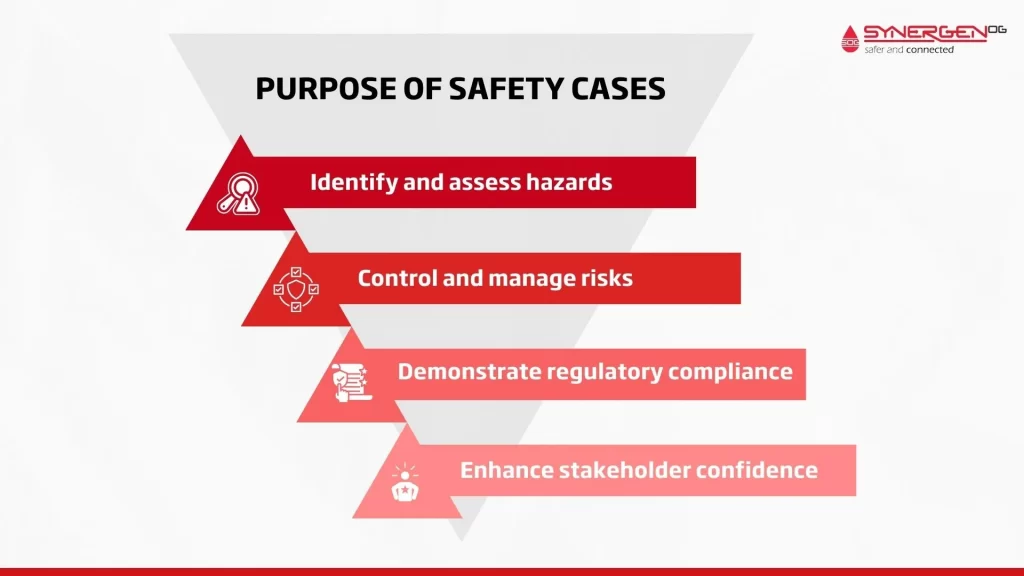
A safety case is a comprehensive document that outlines the management of risks and safety measures within the industry.
One definition is that safety Cases are structured arguments supported by evidence that prove a system is acceptable and safe for a specific application under a specific operating environment.
It is a fundamental tool for demonstrating how hazards are identified, assessed, and controlled to ensure a safe working environment. Safety cases provide an evidence-based approach to managing risks and establishing a strong organisational safety culture.
The primary purpose of a safety case is to:
- Identify and assess hazards: Safety cases require organisations to systematically identify and assess potential hazards and risks associated with their operations. This process involves considering all aspects, from equipment and processes to environmental factors and human activities.
- Control and manage risks: Safety cases define the necessary control measures, procedures, and protocols to mitigate identified risks. These measures encompass engineering controls, safety systems, emergency response plans, and personnel training to prevent or minimise the impact of accidents and incidents.
- Demonstrate regulatory compliance: Safety cases serve as a means to demonstrate compliance with relevant industry regulations and standards. By providing evidence of effective risk management, companies can show that they have taken the necessary steps to operate safely and responsibly.
- Enhance stakeholder confidence: Safety cases communicate a company’s commitment to safety and reputation. They can increase stakeholders’ confidence, including employees, investors, customers, regulatory authorities, and the wider community.
Key Components and Elements of a Safety Case
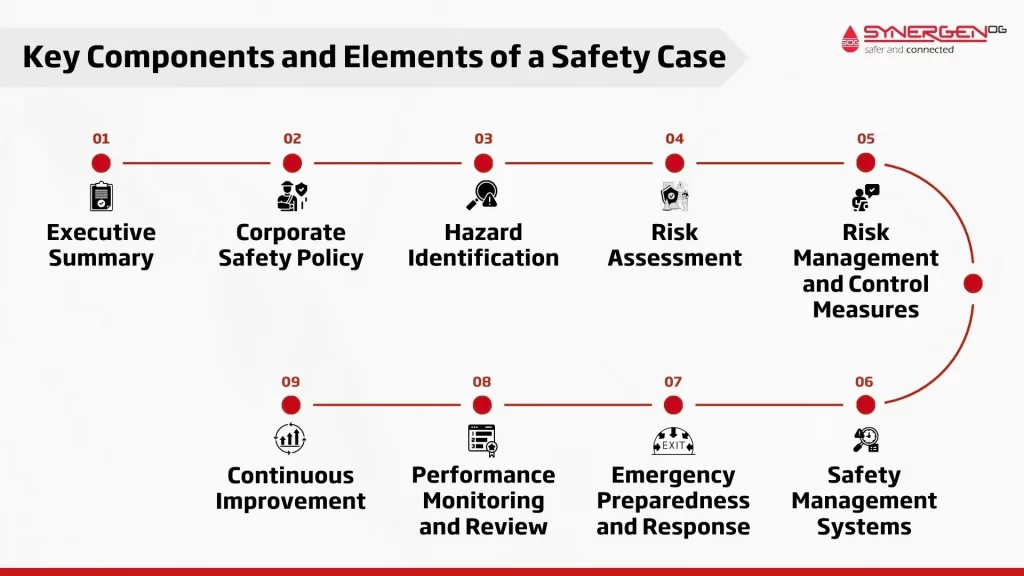
A well-developed safety case typically includes the following key components and elements:
- Executive Summary: A safety case overview highlighting key findings and recommendations.
- Corporate Safety Policy: A clear and concise statement that outlines the organisation’s commitment to safety and its overall goals and objectives.
- Hazard Identification: A systematic process of identifying potential hazards and risks associated with operations onshore and offshore. This includes analysing equipment, processes, and people’s activities.
- Risk Assessment: A thorough evaluation of identified hazards, including the likelihood and consequences of potential incidents. This assessment serves as the basis for determining the appropriate control measures.
- Risk Management and Control Measures: To minimise or eliminate risks, implement control measures. These may include engineering controls, administrative controls, personal protective equipment (PPE), and emergency response plans.
- Safety Management Systems: An overview of the organisation’s safety management system, including safety policies, procedures, training programs, audits, and monitoring processes.
- Emergency Preparedness and Response: Detailed plans and procedures to effectively respond to emergencies, including evacuation plans, communication protocols, and coordination with external emergency services.
- Performance Monitoring and Review: Methods to monitor and assess the effectiveness of control measures and safety performance. This includes regular audits, incident investigations, and tracking safety-related data.
- Continuous Improvement: A commitment to continuous improvement by learning from incidents, near-misses, and industry best practices. This element ensures that safety practices are updated and refined over time.
By incorporating these components and elements into a safety case, organisations in the oil and gas industry can establish a strong foundation for effective risk management and ensure the safety and well-being of their workers and the environment.
Navigating Hazards in the Oil & Gas Industry
Common Hazards in Oil & Gas Operations
The oil and gas industry operates under complex and high-risk conditions, which expose workers to various hazards. Some of the most common hazards include:
- Fires and explosions: Flammable liquids and gases commonly found in oil and gas operations pose a significant fire and explosion risk. Causes include equipment failure, poor maintenance, and human error.
- Natural disasters: Hurricane wind and torrential rains can interrupt oil and gas operations and cause extensive damage. These natural disasters can also cause spills, fires, and explosions.
- Workers’ safety: Workers in the oil and gas industry face risks of injury from handling heavy and dangerous equipment, working at heights, and exposure to chemicals.
- Human-made incidents: Sabotage, cyber-attacks, and terrorism are major hazards that could cause significant harm to oil and gas infrastructures.
The Need for Safety Cases in Mitigating Hazards
In such a hazardous industry, it is vital to have a proactive approach towards mitigating risks to ensure the safety of workers, assets, and the environment. A safety case provides a vital tool to achieve these objectives through:
- Preventing incidents: By analysing potential risks, identifying obstacles, and implementing protocols and measures to prevent them, safety cases help prevent incidents.
- Reducing consequences of an incident: In case of an incident, safety cases help in quickly identifying the risks and setting up strategies to minimise the consequences.
- Demonstrating compliance: Safety cases help to ensure regulatory compliance while assuring the oil corporation stakeholders of their commitment to safety.
Examples of Real-life Incidents and the Role of Safety Cases in Preventing Them
The oil and gas industry has experienced devastating process incidents that resulted in loss of life, environmental damage, and loss of business. Some of these incidents include:
- Deepwater Horizon Oil Spill: One of the most significant disasters that led to the oil flow from the Macondo Well in the Gulf of Mexico. The explosion and sinking of the rig led to 11 workers losing their lives while extensive damage to marine life and the ecosystem was caused. The incident highlighted the need for effective safety cases to ensure the safety of workers and the environment and the implementation of adequate safety systems.
- Piper Alpha Incident: The oil production platform, Piper Alpha, experienced a fire that eventually led to the destruction of the platform and the deaths of 167 workers. The incident showed that safety cases are critical for preventing such events and ensuring effective emergency response plans.
- Buncefield Disaster: An explosion occurred at an oil storage facility in Hertfordshire, England, leading to the loss of lives and significant damage to homes in the surrounding area and causing substantial firefighting efforts. Safety cases were implemented to reduce the likelihood of the reoccurrence of such incidents through installing safety equipment and frequent inspections.
Safety Case Regulations and Standards in the Oil & Gas Industry
Safety cases are prioritised in the oil and gas industry, as relevant regulations and standards require them. These include:
- ISO 9001: ISO 9001 establishes the quality management systems of a company to ensure the quality of products and services and compliance with legal regulations and standards.
- Occupational Safety and Health Administration (OSHA): OSHA enforces standards for safety and health in the working environment, and oil and gas companies must comply with these standards.
- Regulation of Offshore Oil and Gas Operations: The United States Department of the Interior Bureau of Safety and Environmental Enforcement (BSEE) has regulations that require offshore oil and gas companies to establish and maintain safety cases.
- The Safety Case Regulations 2015 (SCR 2015): This legal regulation was developed in the UK, requiring operators to prepare, maintain and revise safety cases for their activities in the upstream oil and gas sector.
By complying with such regulations, oil corporations can assure regulatory authorities and stakeholders of their commitment to safety, including their willingness to follow best industry safety practices to mitigate risks.
This is to note that safety case regulations may vary by country and region, and it is important to refer to specific regulatory authorities and industry guidelines for comprehensive information and compliance.
Benefits of Safety Cases
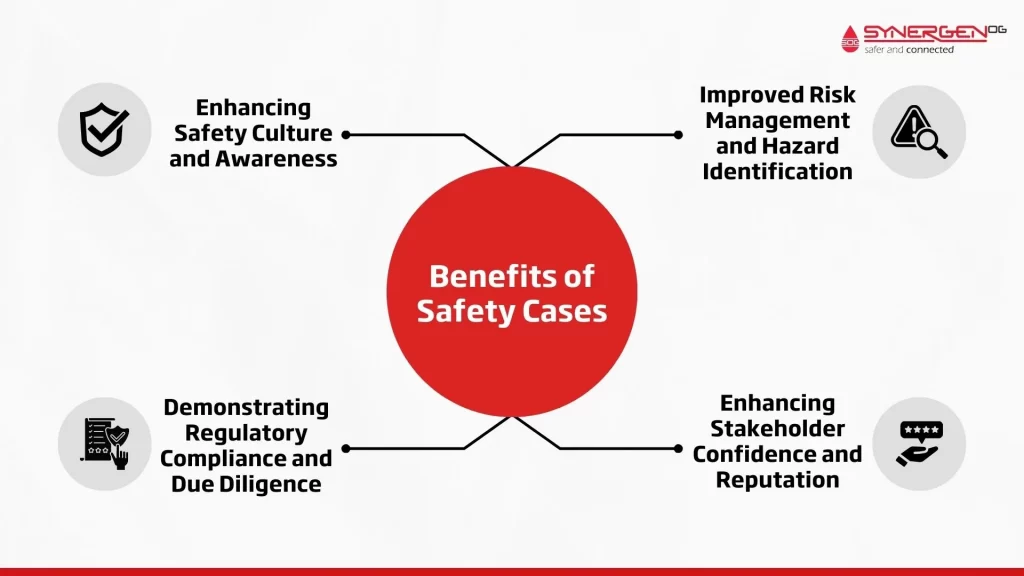
Safety cases benefit the oil and gas industry, enabling companies to enhance safety culture, improve risk management, demonstrate regulatory compliance, and build stakeholder confidence. Some of the key benefits are:
1. Enhancing Safety Culture and Awareness
Safety cases play a vital role in creating a strong safety culture within an organisation. By developing and implementing safety cases, companies prioritise safety as a core value, fostering a work environment that values the well-being of its employees. Safety cases promote:
- Improved safety awareness among employees
- Increased accountability for safety-related responsibilities
- Encouragement of safe work practices
- Empowerment of employees to identify and report hazards
- Promotion of open communication and consultation regarding safety concerns
2. Improved Risk Management and Hazard Identification
Safety cases provide a structured framework for identifying and managing risks in the oil and gas industry. With safety cases, companies can:
- Systematically identify and assess potential hazards and risks
- Implement effective control measures and risk mitigation strategies
- Continuously monitor and review safety performance
- Ensure regular inspections and maintenance of equipment and facilities
- Conduct thorough incident investigations and analyses for continuous improvement
3. Demonstrating Regulatory Compliance and Due Diligence
One of the key benefits of safety cases is their ability to demonstrate regulatory compliance and due diligence. Safety cases ensure that companies meet legal and industry-specific requirements, such as:
- Complying with regulations and standards set by regulatory bodies such as OSHA and BSEE
- Demonstrating a commitment to safety and environmental protection
- Establishing and maintaining proper safety management systems
- Conducting regular audits and inspections to ensure ongoing compliance
- Providing evidence of proactive measures taken to minimise risks and prevent incidents
4. Enhancing Stakeholder Confidence and Reputation
Safety cases are instrumental in building stakeholder confidence and maintaining a good reputation for oil and gas companies. Safety cases help companies:
- Assure stakeholders, including investors, employees, and the public, of their commitment to safety
- Provide transparency regarding safety protocols and risk management strategies
- Enhance reputation as a responsible and reliable industry player
- Establish credibility through independent assessments and audits
- Strengthen relationships with regulatory authorities, local communities, and industry partners
Building Successful Safety Cases with SynergenOG: Electronic Safety Case Software and Process Safety Consultancy Services
SynergenOG provides comprehensive solutions for developing successful safety cases in process industries. With expertise and dedication in the oil and gas industry, SOG can assist you in creating robust safety cases by leveraging experience in the process industry and utilising our safety case software.
By using our safety case software, companies can streamline their safety case development and management process, improving efficiency, accuracy, and compliance. This software can help in improving safety case roll-out.
Learn More About SOG Safety Case Software
Conclusion
Overall, safety cases are essential tools that help oil and gas companies create a robust safety culture, effectively manage risks, comply with regulations, and build trust with stakeholders, thereby ensuring the well-being of workers, protecting the environment, and securing the industry’s long-term viability.
FAQ -What are Safety Cases
- What is safety case development?
The development of a safety case involves the effective identification, evaluation and control of potential hazards, as well as a positive argument to justify the various choices that have been made to provide for the facility’s safety.
A key consideration of the safety case system is the “ALARP” concept, which requires employers to reduce the risk of hazards to As Low As Reasonably Practicable. “Reasonably practicable” roughly means ‘reasonably possible without undue disproportionate economic cost for the minimal benefit to safety.”
- How do you make a safety case?
The development of a safety case involves the effective identification, evaluation and control of potential hazards, as well as a positive argument to justify the various choices that have been made to provide for the facility’s safety.
A key consideration of the safety case system is the “ALARP” concept, which requires employers to reduce the risk of hazards to As Low As Reasonably Practicable. “Reasonably practicable” roughly means ‘reasonably possible without undue disproportionate economic cost for the minimal benefit to safety.”
- What is an HSE safety case?
A safety case is a written demonstration of evidence and due diligence provided by a corporation to demonstrate that it has the ability to operate a facility safely and can effectively control hazards.
A key consideration of the safety case system is the “ALARP” concept, which requires employers to reduce the risk of hazards to As Low As Reasonably Practicable. “Reasonably practicable” roughly means ‘reasonably possible without undue disproportionate economic cost for the minimal benefit to safety.’
- Why are safety cases important?
A safety case will help to drive the applicant to meet its public safety objectives and provide for accountability in doing so. All stakeholders (including the regulator) need to have confidence that applicants have carefully thought through and tested how they will keep the public safe. An effective safety case will give confidence to all parties that the applicant is committed to having an operation that carefully considers and manages the risks to public safety, and that they have the capability and capacity to do so.
- Who needs a safety case?
Organisations that operate facilities with major hazards that could cause catastrophic damage to health, safety, and the environment are commonly required to submit a safety case.
- What is a safety case advisor?
A Safety Case Advisor is responsible for supporting the Safety Case Manager in developing, maintaining and reviewing the Safety Case for their area.
- What is operational safety case?
Operational safety case is a document that consist the information for an installation to demonstrate that there are effective means for ensuring a safe operation throughout facility life. In addition, safety case ensures a comprehensive hazard management process implemented to demonstrate risk has been reduced to As Low As Reasonably Practical (ALARP).
- What is safety case in functional safety?
A safety case is a document which provides a clear and comprehensive argument , supported by evidence to demonstrate that a system is acceptably safe to operate in a particular environment.
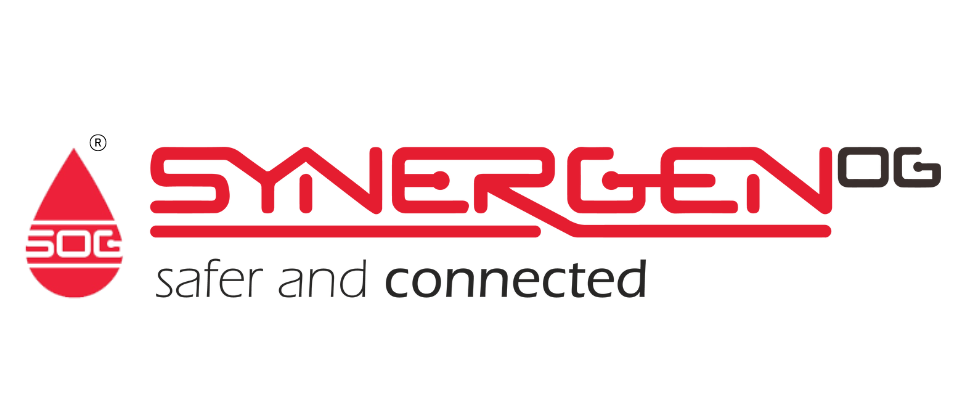
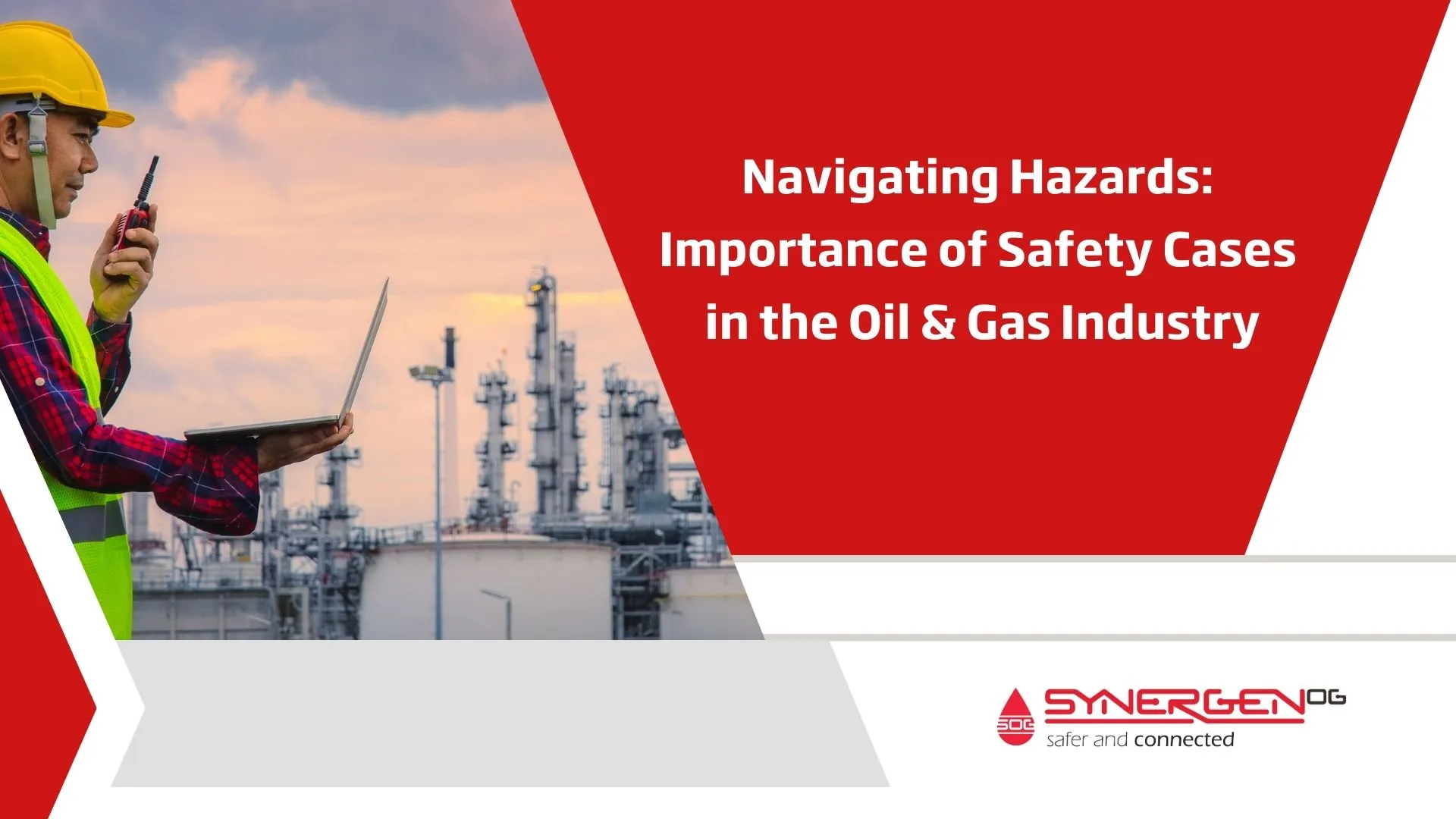

[…] oil and gas industry operates within a high-risk landscape where safety is paramount. With numerous hazards […]